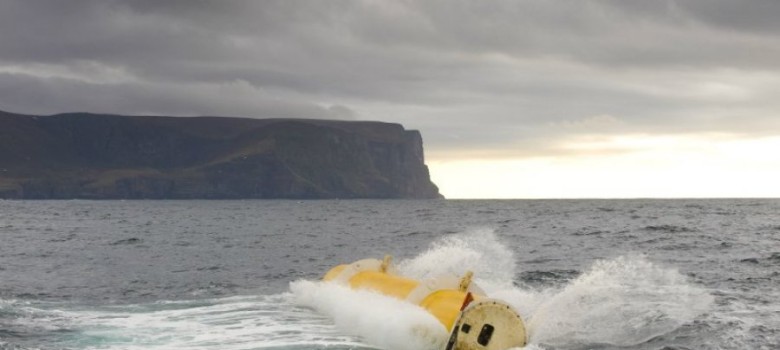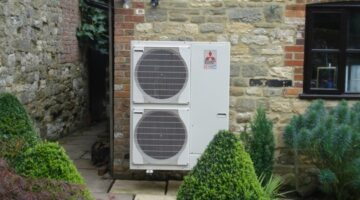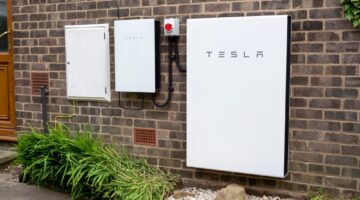
What is Wave Hub?
Wave Hub is a grid-connected offshore facility for the large scale testing of wave energy technologies. It is located in south-west England, 16km off the north shore of Cornwall (see Figure 1). The Wave Hub concept was conceived in 2003 by the South West Regional Development Agency (SWRDA), the necessary consents for the project were obtained in 2007 and Wave Hub was set up in 2010.
Funding for Wave Hub has come from the SWRDA (now disbanded and under central government control), the European Regional Development Fund Convergence Programme for Cornwall and the Isles of Scilly, and the UK government.
Wave Hub – How It Works
The Wave Hub project holds a 25-year lease of 8km2 of seabed that is split into four separate 1km x 2km berths which the project will underlease to wave energy device developers for an agreed term. The length of tenure for developers is not fixed, Wave Hub expects developers to test the reliability of their machines over a number of years and then build larger, commercial scale projects in the region and elsewhere.
The Wave Hub unit itself is connected to the shore via twin 300mm2 33kV power triads and fibre optic cables contained within an armoured cable running under the seabed (See Figure 2). This cable is terminated within the hub unit that lies on the seabed onto two bus bars, and each bus bar services two berthing areas. Each bus bar has two 300m ‘tails’ composed of a three core 120mm2 33 kV cable that operates at 11kV. There is therefore one ‘tail’ for each berth. The lead device from each wave energy array will connect to the hub via an 11kV dry-mate connector situated at the end of each Wave Hub tail and provide both electrical and fibre optic connection, allowing remote control and monitoring of the wave energy devices as well as electrical transmission.
The cable running from the Wave Hub to the shore connects to a new electricity substation at nearby Hayle that consists of an 11kV/33kV transformer with associated switchgear and power factor correction equipment to ensure within specification delivery to the grid. Initial operation of the Wave Hub system will be at 11kV with capability for 16-20MW of power. Once subsea components that allow 33kV operation are developed by the industry, Wave Hub will be have capacity for up to 50MW devices.
The seabed in the region of Wave Hub’s lease is generally 50m to 60m below sea level, and with the south west peninsula exposed to an excellent wave resource in the form of the prevailing westerly Atlantic swell, the typical range in the Wave Hub location is 15-25 kW/m (kilowatts per metre of wave face). Furthermore the region’s strong 400kV grid that runs close to both the north and south coast of the peninsular, and numerous shallow and deep water ports reduces potentially high costs of necessary infrastructure.
Building Expertise and Research Around the Wave Hub
The nearby Universities of Plymouth and Exeter have joined forces to create the Peninsula Research Institute for Marine Renewable Energy, and with the region’s history of advanced maritime and engineering, Wave Hub is in the vicinity of a skilled workforce complemented by world-class research and facilities that enable the project to fulfil its target of bridging the current gap in the industry between R &D, initial prototypes and full commercialisation.
In addition, RegenSW is the south west peninsula’s very own renewable energy agency that has developed the Offshore Supply Chain aimed at supporting a network of companies active in the offshore energy sector numbering in the hundreds.
Wave Hub Environmental Impact
In terms of the environmental impacts, Wave Hub will oversee a co-ordinated and ongoing programme of environmental monitoring with its customers, and extensive baseline data has been recorded to facilitate accurate determination of any environmental impacts of different devices.
Wave Hub and Developing Wave Energy in the UK
The UK has the largest wave energy resource in Europe, and the feasible resource is approximately 50TWh/year, with a practical potential for up to 1,000MW of installed capacity by 2020 as suggested by several reviews. In the South West specifically, a report predicted the installed capacity could be from 83-285 MW by 2020, with the top estimate being equivalent to £57 million in revenue. The Wave Hub project plays an important role if these figures are to be realised.
Currently Wave Hub have received commitments for two of the berths, one of which is from Ocean Energy Ltd., who have been developing and testing an absorbing air chamber platform for the last 10 years, and Wave Hub expect them to take up residence at the beginning of 2013. Wave Hub have also been receiving plenty of interest and believe there is a strong chance of the other two berths being filled soon.












No Comments yet! Be the first one.